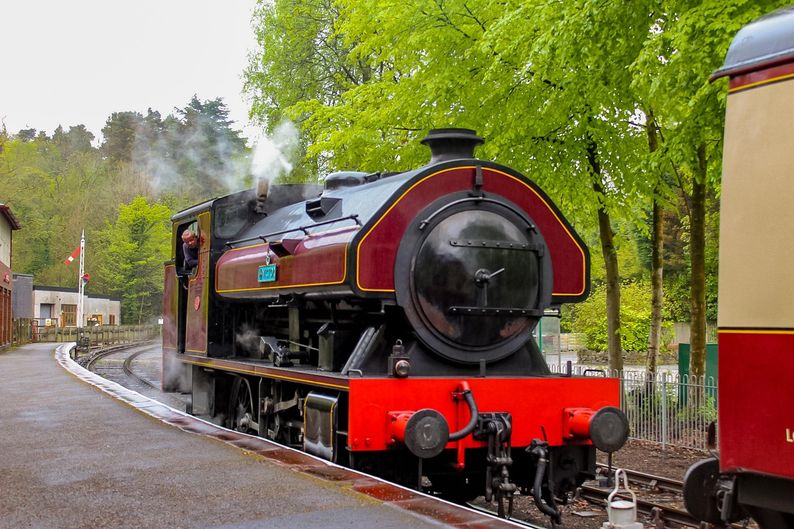Birth of the Railway (Natal Chart)
PDF Download, 126.9 KB
Click 'Download PDF' to view this astrological chart.
Download PDFIron Horses
by Jane Lewis
September this year marked 200 years of the age of modern railways. A horoscope cast for 12.30pm on 27th September 1825 at Shildon in County Durham shows the departure of the very first steam train, Robert Stephenson’s Locomotion, and the opening of the Stockton and Darlington Railway. Truly an historic event that changed the way of life through cheaper and faster transportation of coal and goods that fuelled the second stage of the Industrial Revolution. A revolution that started in North East England and rippled out around the whole world during the Victorian era.
As expected, the chart contains a lot of fire with conjunctions of Moon-Pluto in Aries and Mars-Venus in Leo, plus the moon’s north node in the mutable fire sign close to the Sagittarius ascendant. It’s a full moon chart with the Libra Sun opposition Pluto-Moon. Nothing in water signs is perhaps surprising given the fact that steam locomotion depends on a fire-water combination, but closer inspection reveals the dynamic T-square in which watery Neptune squares the Sun-Pluto-Moon opposition. Neptune in Capricorn indicates that the power of water is applied for practical, material industrial purposes that will change the shape of society irrevocably.
The Moon’s north node in Sagittarius close to the ascendant speaks most eloquently about what this event stood for. The iron horse was an early name used for a train or railroad, the horse being a strong symbol for Sagittarius whose glyph is half-man and half-horse. The railway contains a great quality of strength, endurance and perseverance. These iron beasts consistently and, for the most part reliably, haul enormous loads over vast distances, tirelessly roaming the surface of the earth like tamed horses with strength and speed combined with gentleness and dedication.

There’s something very powerful about trains and railways that strikes a deep chord with the British psyche, particularly in men. There’s something entrancing about them, they certainly inspire great enthusiasm among many, often deep passion. Even modern electric and diesel trains have the capacity to fire the imagination. In a Libran way, they bring into balance the opposites of speed and stillness, movement and rest. There’s a sense of ‘letting the train take the strain’ out of travel in a way that neither motor car nor airplane can. As a passenger, you can certainly hand over the care and responsibility of distance travel, rest and even sleep in ways that aren’t really possible on most aircraft. The romance of train travel perhaps arises from aesthetics, and because it provides a more civilised mode of passenger transport, less frenetic and stressful than the car and more grounded than planes. In the midst of an increasingly chaotic world, trains have the ability to maintain stillness and composure, leading to a sense of peace and wellbeing.



 News
News